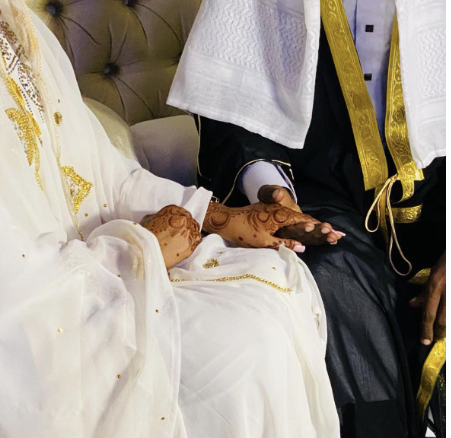
The Borana people, part of the Oromo ethnic group predominantly found in northern Kenya and southern Ethiopia, have rich cultural traditions surrounding marriage.
Their weddings are deeply rooted in their heritage, involving elaborate ceremonies and rituals that reflect their values, communal spirit, and familial bond.s
Here is a comprehensive breakdown of how a Borana wedding is conducted, from courtship to post-wedding rituals.
Courtship and choosing a partner
Courtship in the Borana community is a structured process influenced by cultural norms and familial input.
Traditionally, marriages were often arranged by families, but modern Boranas increasingly allow young people to choose their partners.
Young men and women meet during communal events, market days, or social gatherings. Character, family reputation, and clan compatibility play a crucial role in choosing a partner.
Inter-clan marriages are encouraged to strengthen social ties, but marrying within one's clan is strictly prohibited due to kinship rules.
Once a man identifies a woman he wishes to marry, his family becomes actively involved in the process.
The man's parents or close male relatives (often uncles) approach the woman’s family to express interest.
This is known as "kadhanaa," the formal proposal.
During this meeting, the man’s family presents gifts, often in the form of livestock, such as goats or cattle, as a gesture of goodwill.
If the woman’s family accepts the proposal, they proceed to discuss the dowry, referred to as "gabbara."
Negotiating and paying the dowry
The dowry is a central aspect of a Borana wedding. It typically consists of cattle, camels, and goats, reflecting the pastoralist lifestyle of the Borana people.
The exact number of animals is negotiated between the two families, with input from elders to ensure fairness and adherence to cultural no.rms
Once agreed, the groom’s family delivers the dowry in stages, symbolizing their commitment to the union.
It is common for the delivery of dowry to be accompanied by ceremonies involving songs, blessings, and feasts.
The exchange strengthens the bond between the families and signifies the seriousness of the groom's intentions.
Pre-Wedding preparations
As the wedding day approaches, both families make extensive preparations.
The bride’s family gathers gifts, often household items or traditional Borana attire, which she will take to her new home.
The groom’s family organizes the feast, secures the venue, and ensures that all the rituals are followed.
The bride undergoes several beauty rituals, such as having her hair braided and wearing special jewellery.
She is also given advice by elder women on her role as a wife and the expectations of married life.
Similarly, the groom is guided by elder men on his responsibilities as a husband and leader in the family.
The Wedding Day
Borana weddings are grand communal events that bring together family, friends, and the community.
The day begins with a ceremony called "mana galmaa," where blessings are offered for the couple’s union.
The bride is escorted to the groom's home in a grand procession, often involving singing, dancing, and traditional music.
Her arrival marks the climax of the wedding.
At the groom’s home, elders perform rituals to bless the union, invoking the protection of Waaqaa (God) and ancestors.
A feast follows, featuring Borana delicacies such as "marqa" (a traditional porridge), roasted meat, and milk-based dishes.
The communal nature of the feast symbolizes the unity of the two families and the entire community.
Wedding rituals
During the wedding, symbolic rituals are performed to solidify the marriage.
One key ritual involves the couple sharing milk or honey in front of the gathered community, signifying unity, sweetness, and the nurturing nature of marriage.
The bride is also introduced to her new home in a symbolic gesture known as "galgallo," where she is welcomed with blessings, gifts, and advice from the groom’s family. This ritual emphasizes her transition from her birth family to her marital home.
Post-Wedding Traditions
After the wedding, the bride remains in her marital home for several days, adapting to her new environment and responsibilities.
Elderly women in the groom’s family guide her on managing the household and fulfilling her marital duties.
A follow-up ceremony occurs after a few weeks.
The bride’s family visits her new home to check on her welfare and bring additional gifts.
This gesture reinforces the relationship between the two families and ensures that the bride is settling in well.
Modern Adaptations
While traditional Borana weddings remain popular, modern influences have introduced changes.
Urban Borana may incorporate Western elements, such as exchanging rings or hosting church weddings, alongside traditional practices.
However, the cultural essence—emphasizing family, community, and respect for tradition—remains intact.
The Finale
A Borana wedding is not just a union between two individuals but a celebration of family, community, and culture.
Every step, from courtship to post-wedding rituals, is imbued with meaning, symbolizing the values of unity, respect, and continuity.
For the Borana people, marriage is a cornerstone of life, ensuring not just the growth of families but also the preservation of their rich cultural heritage.

















